About
Visit
Museum
Photos
Video
News
Events



STATEHOUSE NEWS

Ohio Statehouse to Commemorate 2013 Statehood Day with Small Exhibit in Rotunda
Ohio Became the Nation's 17th State on March 1, 1803
February 22, 2013
In commemoration of Ohio’s founding on March 1, 1803, the Ohio Statehouse will host a small exhibit in the Statehouse Rotunda February 27 through March 1. The Statehood Day exhibit will include the film, “The Debate Over Statehood,” which depicts the struggle for Statehood between Arthur St. Clair and Thomas Worthington.
“The Debate Over Statehood” highlights how Ohio became a state through an interesting tale of political intrigue between Jeffersonians who wanted Ohio’s seats in Congress, and Federalists who wanted to delay Ohio’s statehood. Seating will be available.
The display will also include the original portraits of St. Clair and Worthington and a model of the first Columbus Capitol. Guests with handicaps may reach the Rotunda by the south Light Court elevator.
Thomas Worthington emerged as a political leader in the Northwest Territory upon arriving in Ohio in 1796. Worthington built his home, Adena, near Chillicothe. From 1799 to 1803, Worthington served in the territorial legislature. A committed member of the Democratic-Republican Party, Worthington became a major opponent of the Northwest Territory’s Governor Arthur St. Clair and the Federalist Party. St. Clair actively opposed Ohio’s admittance to the Union. He hoped that Ohio would not become a single state but rather two states.
Worthington and several others urged President Thomas Jefferson, to make Ohio a state. Worthington personally traveled to Washington, D.C. to urge Ohio statehood. Jefferson responded by approving the Enabling Act of 1802. This act called on the people of Ohio to form a constitutional convention and to fulfill other requirements of the Northwest Ordinance to become a state. St. Clair denounced the Enabling Act, prompting Jefferson to remove St. Clair as territorial governor. Ohio became the seventeenth state of the United States on March 1, 1803.
Worthington served in the Ohio General Assembly briefly in 1803 but became one of Ohio's first two United States Senators in that same year. He served as a senator until 1807. He then became a member of the Ohio General Assembly for the next two years. In 1810, he returned to the United States Senate. While in the Senate, Worthington urged the United States government to send military assistance to the settlers of Ohio to aid them against the Indian forces of Tecumseh and the Prophet. He also believed that the United States was too weak to defend itself adequately against the British and opposed the War of 1812. He resigned his senate seat in December 1814 to become governor of Ohio. He was reelected governor in 1816.
Dates Leading Up to Statehood
• November 29, 1802, Ohio adopted its first state constitution and ratified that of the United States.
• February 19, 1803, when the Congress of the United States passed the Enabling Act recognizing Ohio's statehood and establishing the United Stated District Court for Ohio.
• March 1, 1803, when the first General Assembly convened in Chillicothe.
About Ohio History
After the American Revolutionary War, the U.S. Congress intended to convert land ceded by the British into organized states. The area now known as Ohio became part of the Northwest Territory, the land north and west of the Ohio River. The Northwest Ordinance of 1787 provided for an orderly administration of this territory and its transformation into settled states. By 1802, the population of the eastern division of the Northwest Territory had reached 45,000, and Congress authorized an election of delegates and the drafting of a state constitution in preparation for Ohio’s admission to the Union. A constitutional convention held in Chillicothe in November 1802 drafted Ohio’s first constitution.
After elections held in January 1803, the first Ohio General Assembly convened in Chillicothe. Ohio entered the Union on March 1, 1803, as the 17th state.
When Ohio joined the Union in 1803, a two story stone building in Chillicothe served as the state capitol. In 1810, for political reasons, the General Assembly moved the capital temporarily to Zanesville, holding sessions in the new brick courthouse. Legislation enacted on February 20, 1810, provided for the selection of a permanent site for a capital “not more than 40 miles from what may be deemed the common center of the state,” ruling out both Chillicothe and Zanesville.
In 1812, the General Assembly restored Chillicothe as a temporary capital until the new capital could be built.
Images are available upon request or online at:
http://www.ohiostatehouse.org/Multimedia/MediaLibrary/Collection.aspx?collectionId=102203.
To view this press release and others, visit www.ohiostatehouse.org.
The Ohio Statehouse is more than a monument to our past; it's where history happens! The Ohio Statehouse is open weekdays from 7 a.m. to 6 p.m.; weekends from 11 a.m. to 5 p.m.; closed holidays. The Ohio Statehouse Museum is open weekdays from 9 a.m. to 5 p.m.; weekends from noon to 4 p.m.; closed holidays. Admission is free. Free guided tours are offered weekdays on the hour from 10 a.m. to 3 p.m., and weekends from noon to 3 p.m. Tours depart from the Map Room easily accessible from the Third Street entrance. Groups of 10 or more are requested to call in advance to ensure a guide is available. Contact 888/OHIO-123 for more information or to schedule a group tour. For more information about the Ohio Statehouse visit www.ohiostatehouse.org.
The Ohio Statehouse is handicapped accessible and senior friendly. The Capitol Square complex was restored to allow for greater access by individuals living with disabilities. Ohio Statehouse public programs and events are held in accessible and barrier free areas of the building so that everyone can participate. Ohio Statehouse visitors needing disability-related accommodations in order to fully participate in an event may contact the Capitol Square Review and Advisory Board at statehouse@csrab.state.oh.us or 614/752-9777 to communicate special needs. Please allow three weeks for arrangements to be completed.
The Capitol Square Review and Advisory Board (CSRAB) is responsible for maintaining the historic character of the Statehouse and Capitol Square while providing for the health, safety and convenience of those who work in or visit the complex. The Ohio Statehouse Museum Education Center coordinates tours of Capitol Square and provides information about the buildings, their history and Ohio's government.
# # #
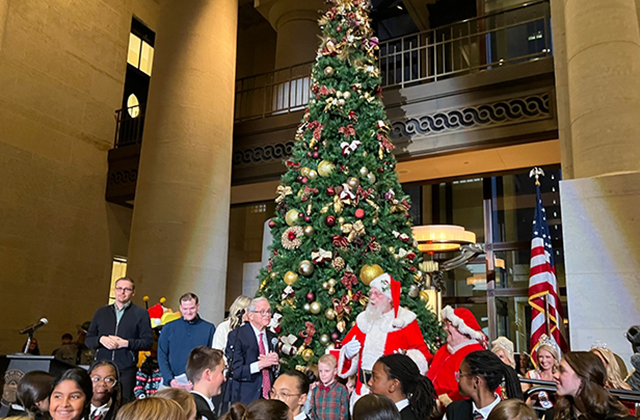 Holiday Festival and Tree Lighting 2025
Holiday Festival and Tree Lighting 2025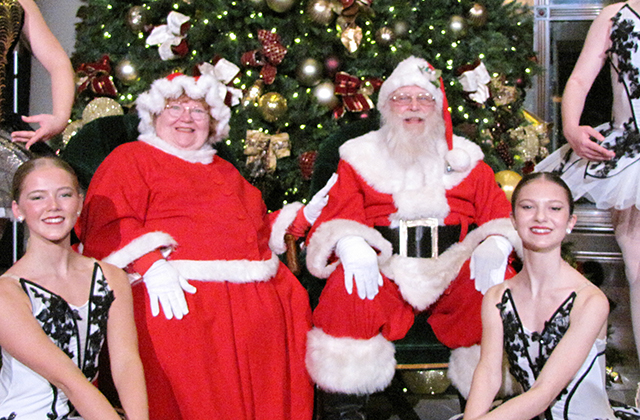 Holiday Santa Photos 2025
Holiday Santa Photos 2025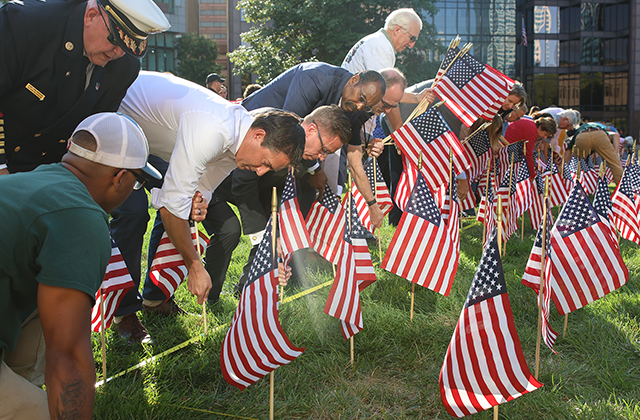 Flags for 9-11 in 2025
Flags for 9-11 in 2025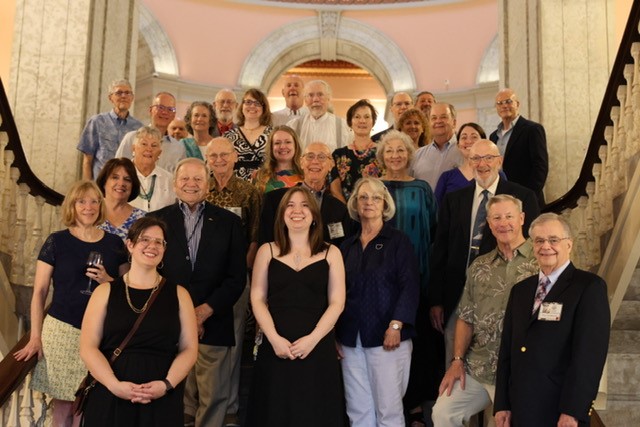 2025 Volunteer Appreciation Dinner
2025 Volunteer Appreciation Dinner America 250-Ohio
America 250-Ohio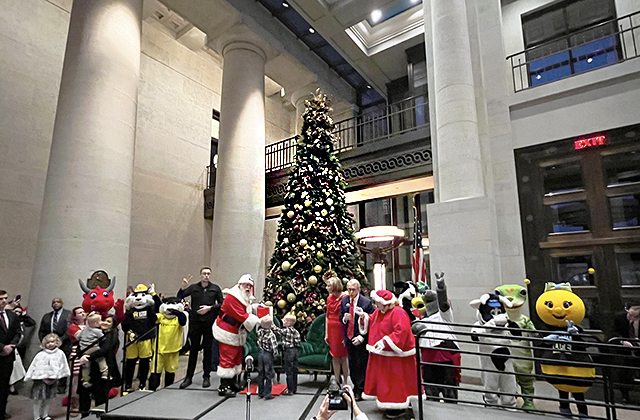 Holiday Festival and Tree Lighting 2024
Holiday Festival and Tree Lighting 2024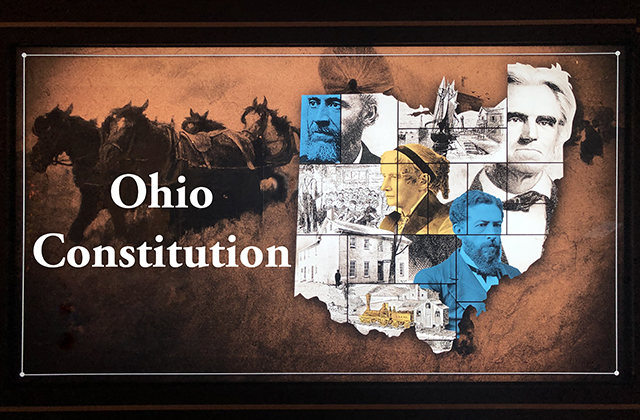 Ohio Constitution Videos
Ohio Constitution Videos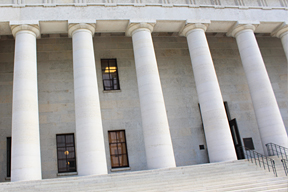 Ohio Statehouse Videos
Ohio Statehouse Videos






